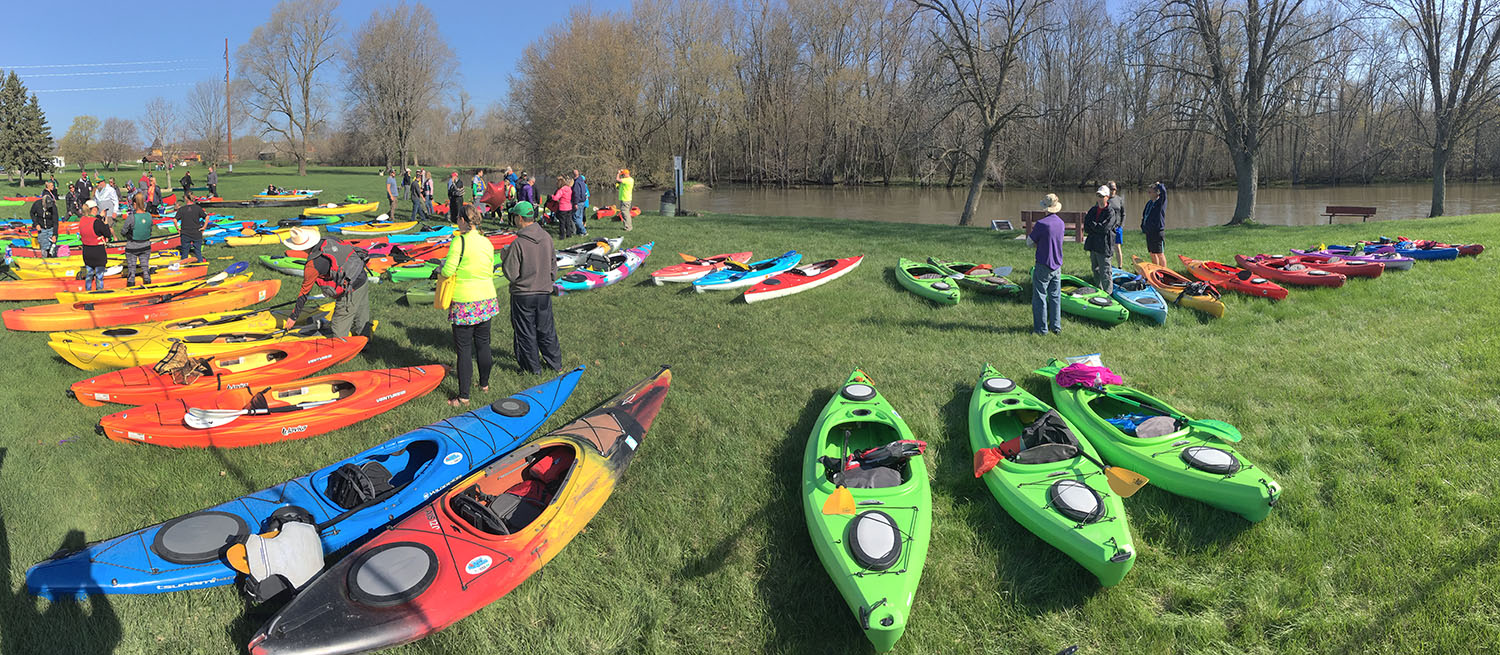
Paddling SE Wisconsin: Adventure Awaits!
July 13, 2025 | Topics: Stories
By Eddee Daniel
This is a cautionary tale, to some extent. I’ll explain in a moment. But really, this is a love song to a lovely sport! My wife, Lynn, and I came late to kayaking. But we fell in love with it and by now have paddled many if not most of the navigable waters within an hour of Milwaukee. When I conceived of this story, I thought it would be a guide to places to paddle in SE Wisconsin. But then, as I began to assemble the story, it quickly became clear that there are far too many places; it would have had to be a book, not a blog post.
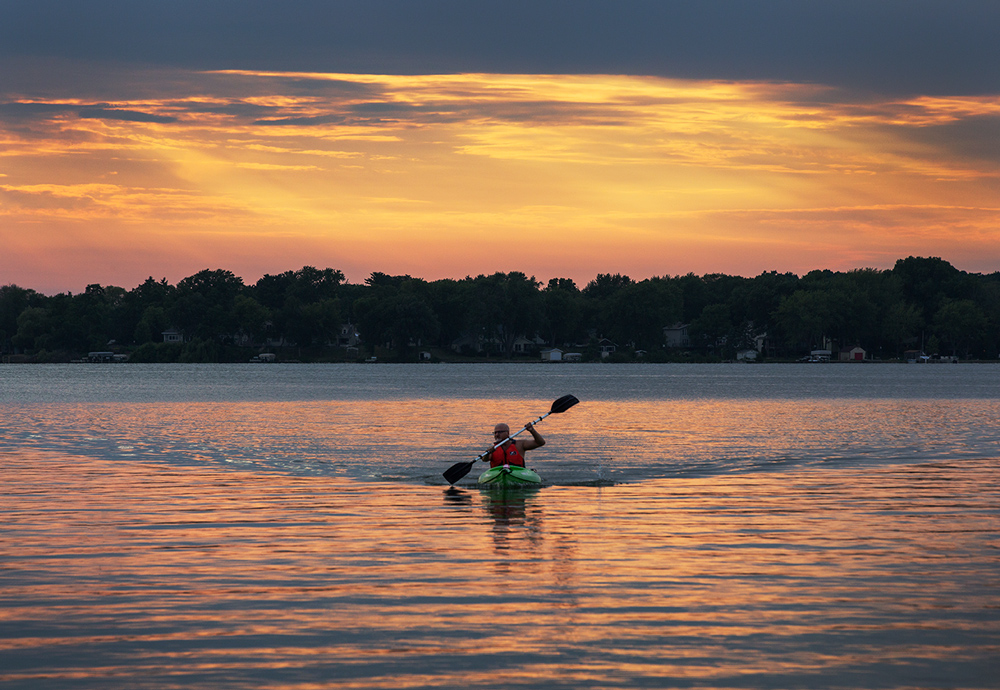
Instead, I shall be sharing anecdotes about some of our experiences, revealing some favorite spots, and perhaps warning you off from others. Most if not all of these places can be navigated with a canoe or paddleboard as well as a kayak. (Full disclosure: I’ve only been on a paddleboard once, so I can’t really vouch for it. My confidence is based on observing others.) I have written about many of these anecdotes individually in previous blog posts. Links to those stories are provided for anyone who wants to get the fuller picture—and, literally, additional pictures, because let’s face it: a single photo rarely conveys the complete picture.
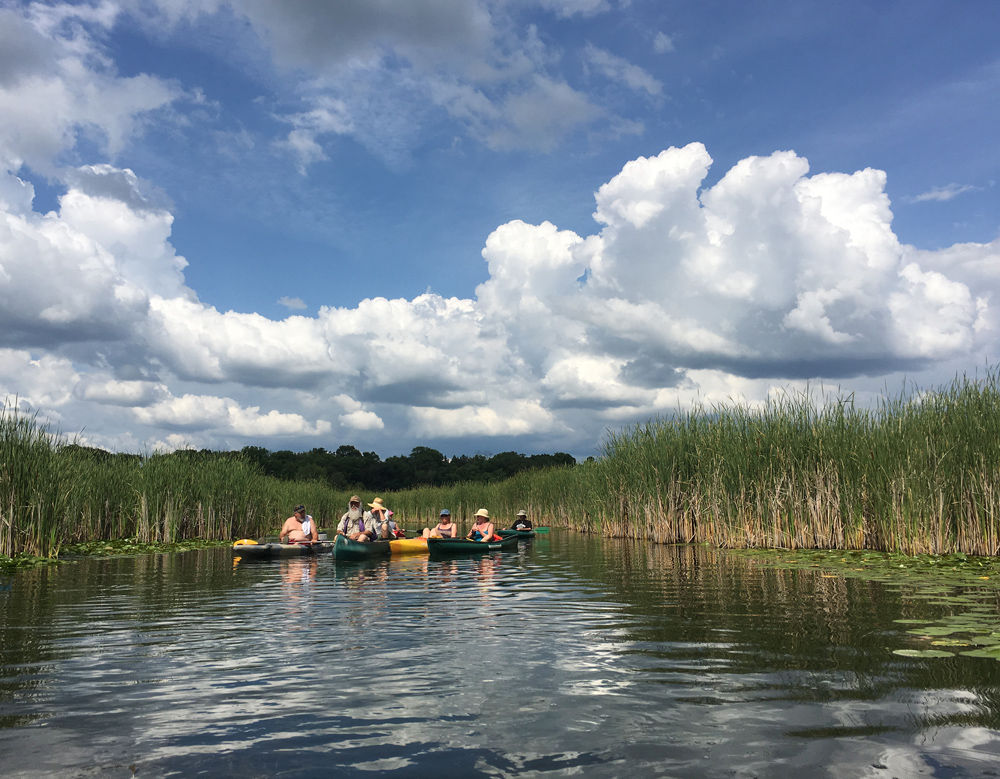
Although there are lots of lakes in SE Wisconsin, and we’ve paddled many of them, when I finalized my selections for this post it turned out that, with one exception, they are all rivers. I guess I prefer rivers! As a consolation prize, of sorts, I’ve also created a Flickr album with many more paddling photos that include the lakes I’ve been to.
But let’s begin with that one exception.
Lulu Lake
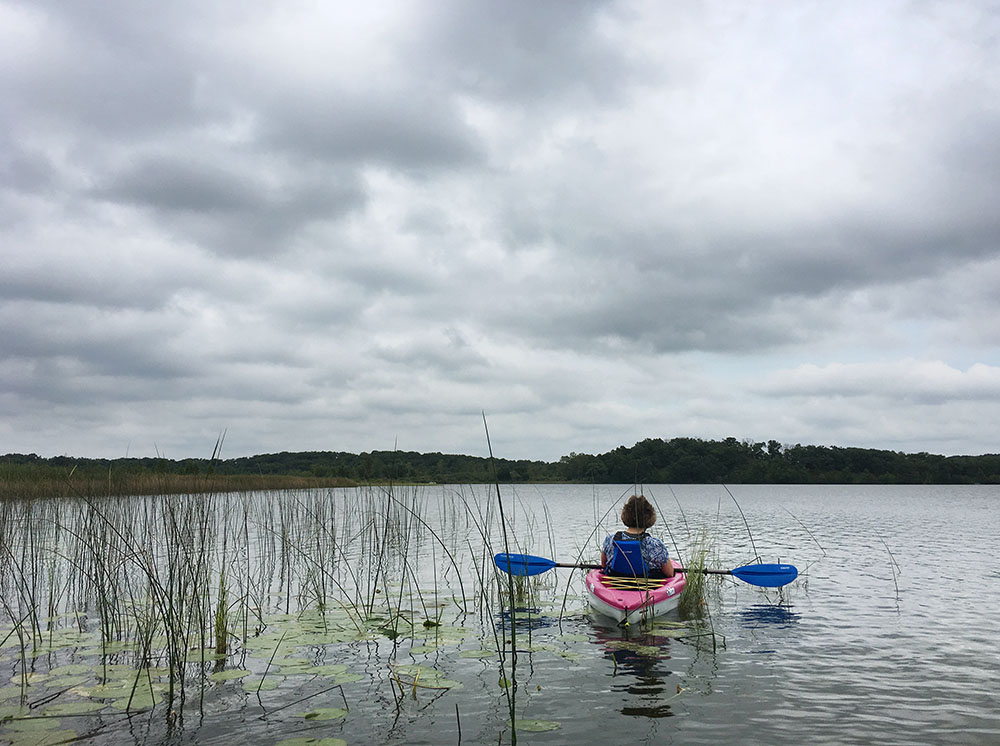
There’s actually a river involved in this one, too. To reach Lulu Lake you put in at the boat launch on Eagle Springs Lake. You cross the lake and paddle up a short stretch of the Mukwonago River to get to Lulu Lake. All of it is part of the Mukwonago River watershed, which is renowned for being one of the most pristine and biodiverse in Wisconsin—and likely in the country!
Lulu Lake is surrounded by the 1,800-acre Lulu Lake State Natural Area, which helps to keep the water clean and the scenery natural. I like to go during the week when it’s not crowded. Motorboats are allowed on the lake and it can get pretty busy on weekends and holidays.
Mukwonago River
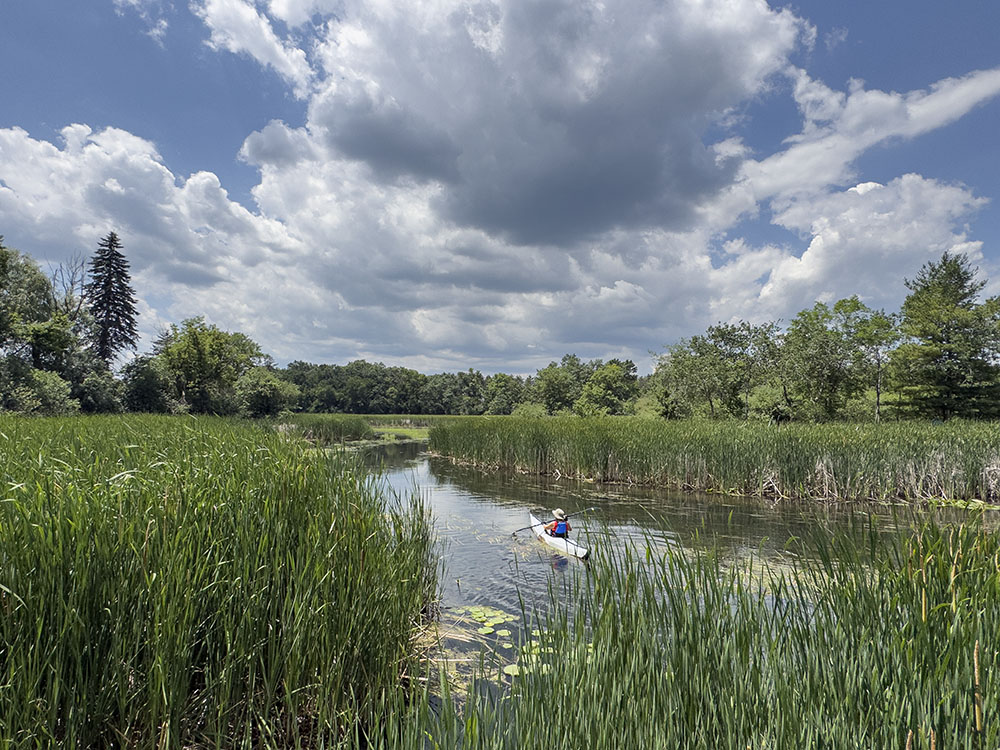
While we’re talking about the Mukwonago River, just last week we tried out another section. We put in at Hwy I, just west of the Village of Mukwonago, and headed upstream. It didn’t take long to discover that the river is quite shallow and largely filled with reeds. We didn’t have to get out and walk, which was good because the silt in the river bottom seemed deeper than the water! Not a good choice for a canoe, but a paddleboard, which sits on top of the water, might be perfect. It was beautiful and worth the effort, but it was an effort. Floating back downstream through the reeds was quite lovely.
You could go from the same boat launch into Phantom Lake, which is downstream from Hwy I. I haven’t done it yet. Strategically, we tend to avoid going downstream first and having to end up returning upstream.
Loew Lake
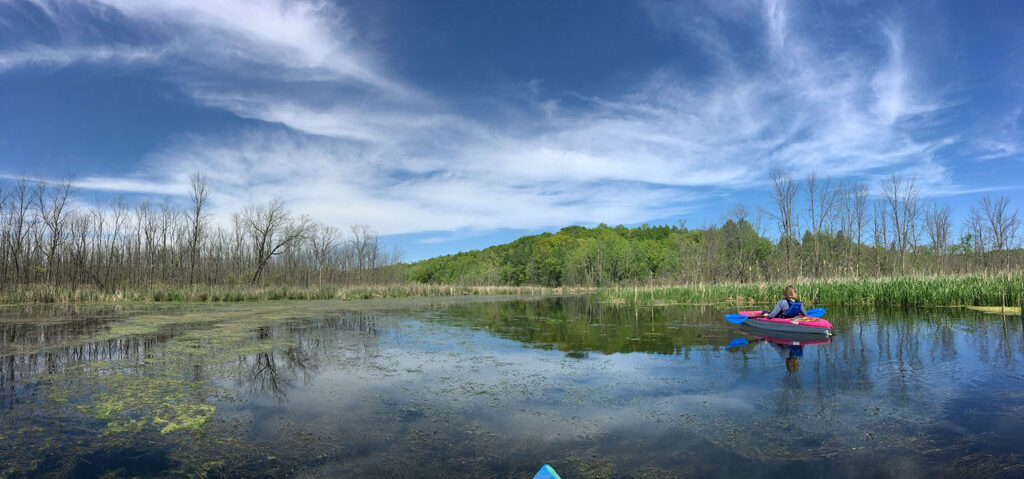
Now you’re going to think I’m reneging. But in the four or five times I’ve paddled up the Oconomowoc River I’ve only once made it all the way to the lake. So I consider this a river paddle. The entire trip, from the boat launch on Hwy Q to Loew Lake (if you make it that far) is within the Loew Lake Unit of the Kettle Moraine State Forest.
Story link: Loew Lake by Kayak—at Last!
Bark River at Lower Nemahbin Lake
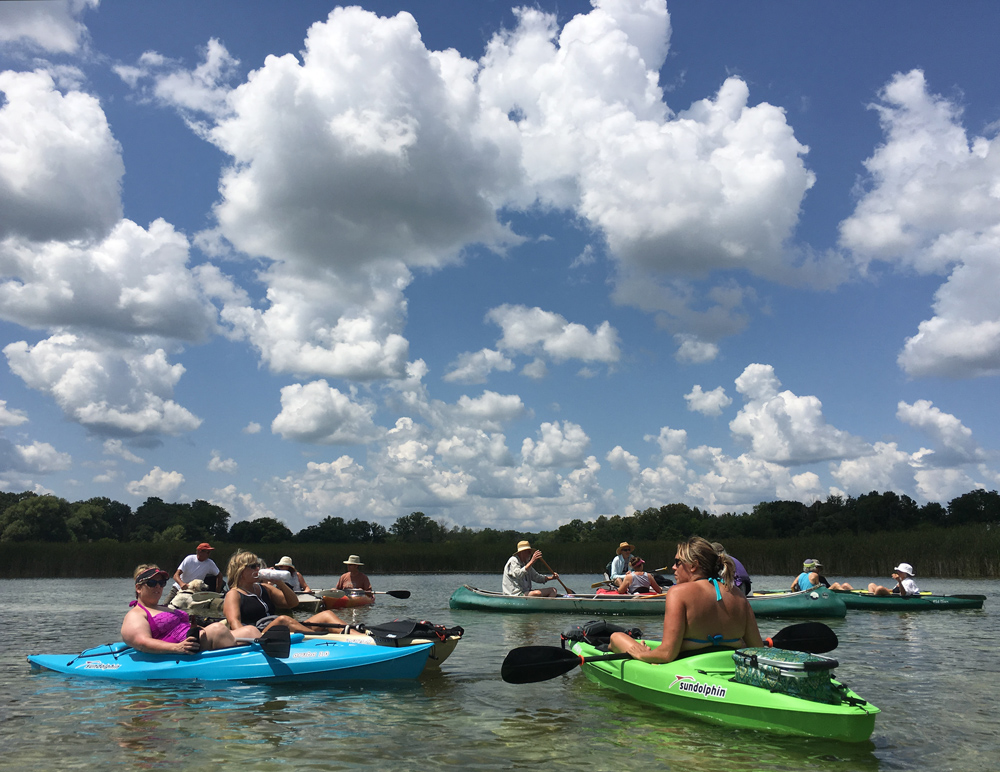
This one is a gem. And it actually includes two lakes, which makes it kind of hybrid experience. The boat launch is at the end of Sugar Island Road in the Lower Nemahbin Fish and Wildlife Habitat Area. The Lower Nemahbin is worth paddling around by itself, which we’ve done, and is probably our second favorite lake after Lulu.
It can be a little tricky to locate where the Bark River exits the lake. Head left out of the boat launch and stay right along the cattails until you come to it. If you reach a row of houses you went too far. Before long you will reach Sawyer Road and a small dam that needs to be portaged. After that it is quite literally smooth sailing. The river twists and turns like a writhing snake but it has a steady current.
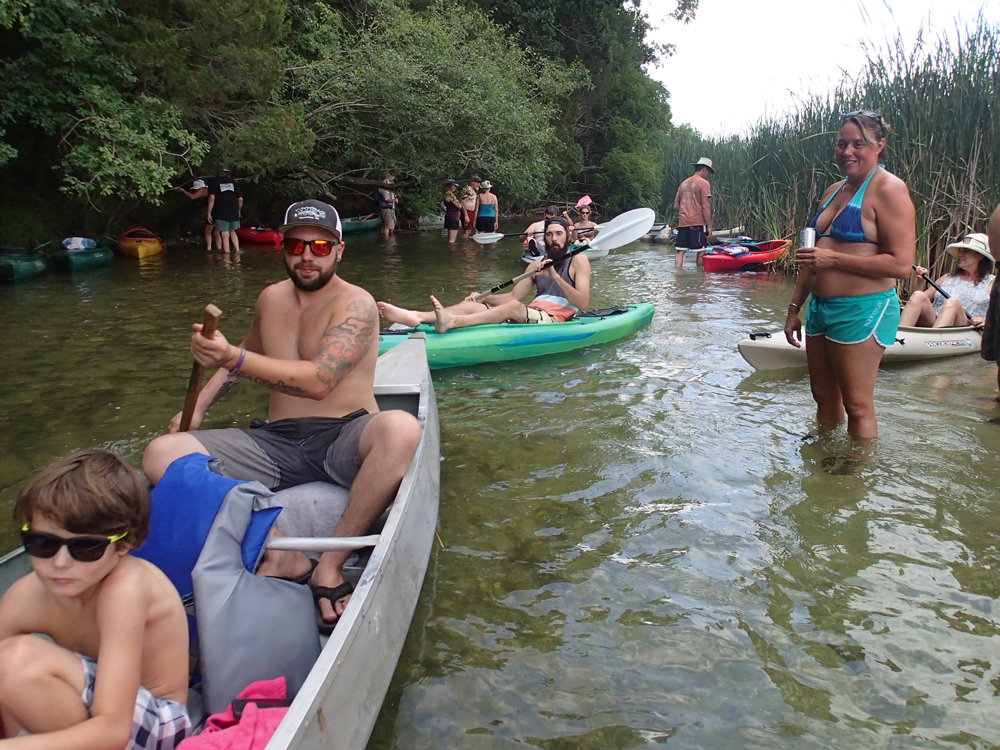
It isn’t very far to the take out at Genesee Lake Road. If you paddled steadily you might get there in under an hour. But if you float lazily, as we did with a group that does it annually (calling themselves Floatilla), it can take all afternoon! About halfway through you reach Crooked Lake, where we all got out to swim. Like Lulu Lake, this stretch has become quite popular and the narrow river channel can get crowded on busy days.
Story link: Floating down the Bark River with Floatilla
Root River
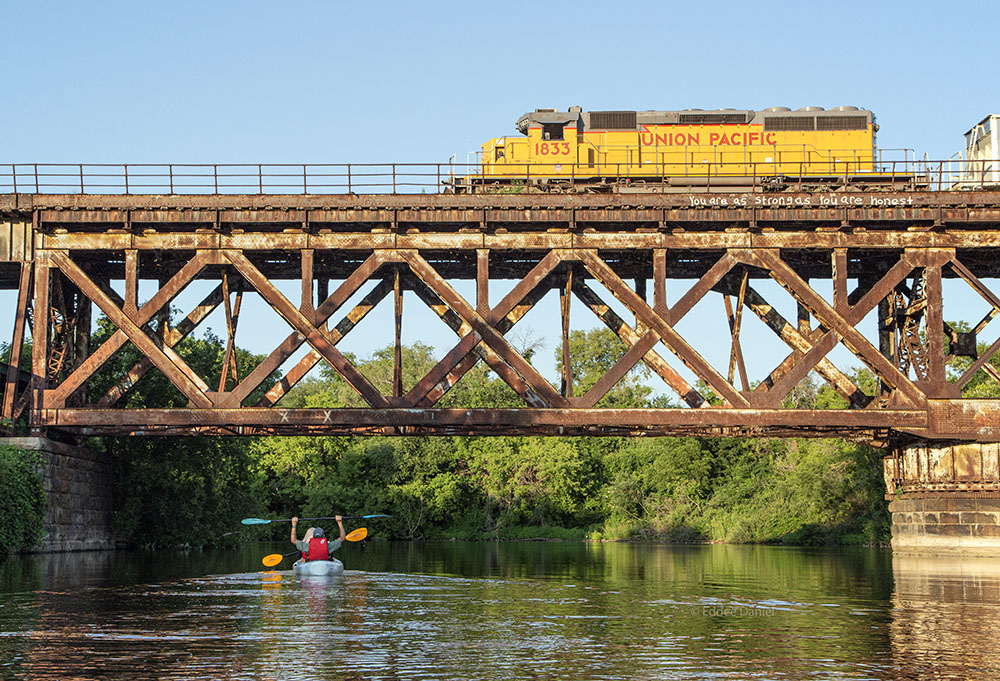
I’ve paddled three sections of the Root River. Lynn and I tried heading upstream from Linnwood Park in Caledonia one time. We didn’t get very far before it became too shallow and clogged with trees.
The Root-Pike WIN (Watershed Initiative Network) and SEWRPC (Southeast Wisconsin Regional Planning Commission) sponsored a tour of the lower Root River beginning in downtown Racine at the Root River Environmental Education Community Center. That was surprisingly lovely, considering its location near downtown. I could’ve gone farther than we did.
Story link: Kayaking the Root River with Root-Pike WIN and SEWRPC
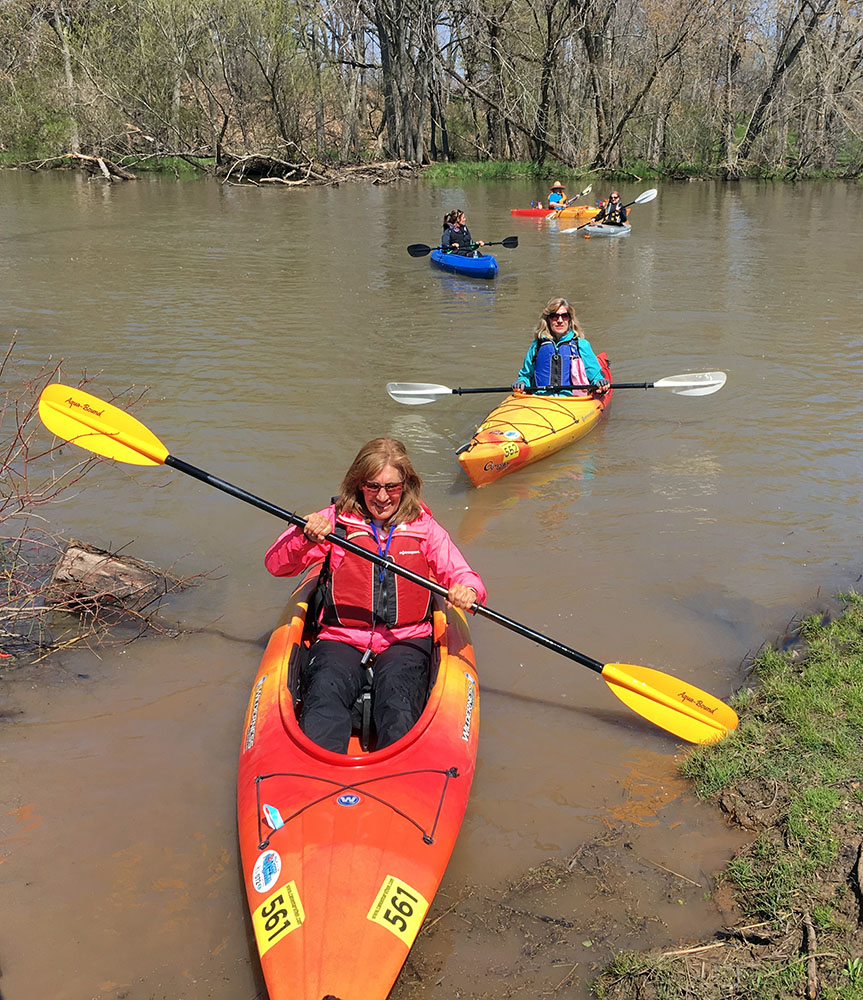
But my favorite stretch is between Linnwood Park and the Horlick Dam. I first discovered this section when I participated in the Root River Challenge in 2019. I was among 110 kayakers who went from Linnwood Park to River Bend Nature Center. It was exciting and involved several spills (I was not one of them). The featured photo at the top is from Linnwood Park at the start of the Root River Challenge. The Horlick Dam, not far downstream from River Bend, is slated to be removed at some point, which may make it possible to paddle all the way down to Lincoln Park before encountering another dam at the Steelhead Facility there.
Story link: Kayaking in the Root River Challenge
Menomonee River
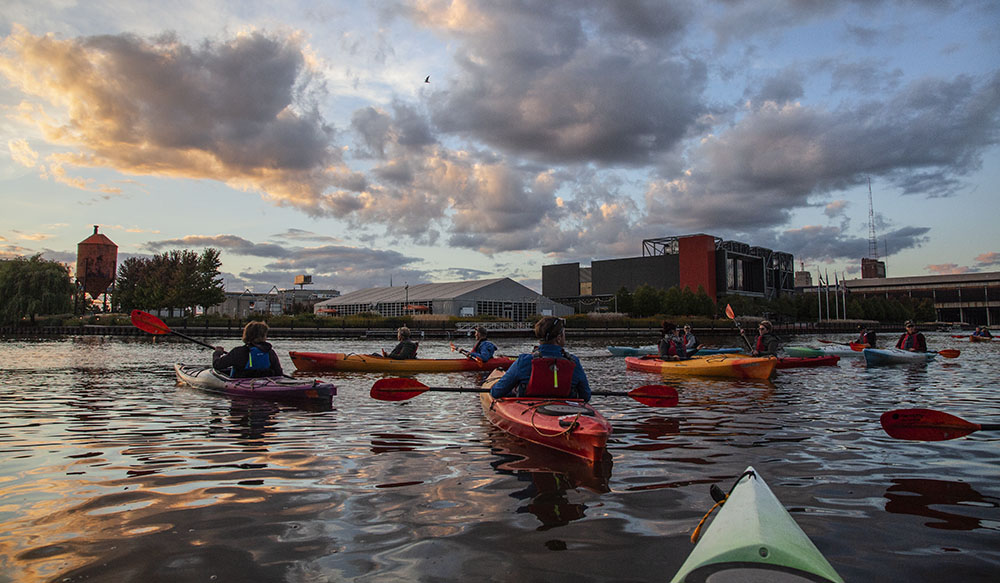
The Menomonee River and the two canals connected to it in the Menomonee Valley, where it is still part of the Milwaukee River estuary, are excellent places to paddle. I’ve probably paddled here more often than any other single place. There’s nothing natural about it, of course. I like nearly all of my other favorite places precisely because they bring you close to nature. The Menomonee Valley, by contrast, is still largely shaped by its industrial past. But because of that there’s a great variety of things to see. Nature can even show up in surprising ways. The last time I went, with a Milwaukee Riverkeeper tour group, we saw a beaver and two species of herons in the canal (great blue and black-crowned night herons).
Story link: Menomonee River Valley Kayak Tour 2020
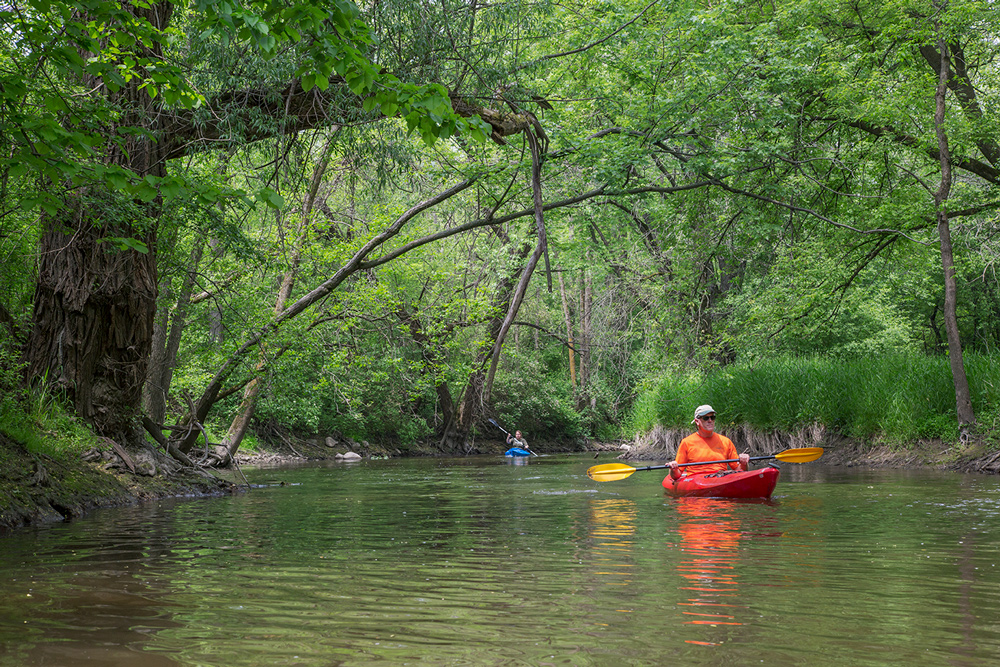
The rest of the Menomonee River is another story—and a cautionary one! It’s difficult and very flashy. I’ve only attempted it three times. Once it was too low, which resulted in a lot of walking the kayaks, and once was too high, which required our group to dunk ourselves to get underneath some of the golf cart bridges in Curry Park because they came up too fast to portage around!
On the other hand, it provided one of my favorite kayaking stories: The constant lure of adventure: Kayaking a surprisingly wild urban river
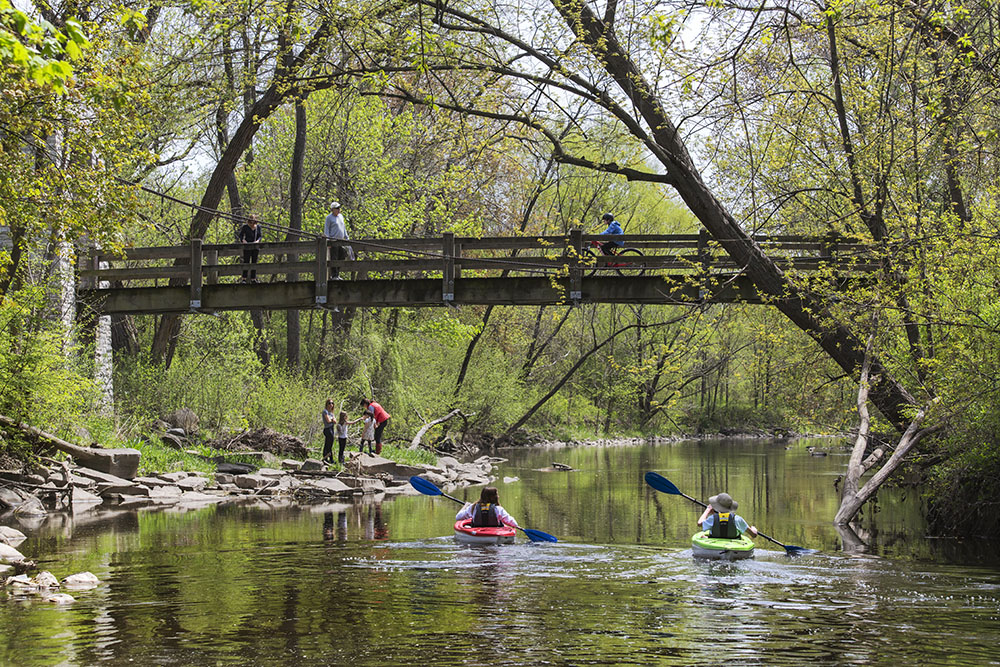
Well, this account is getting a bit long … and I haven’t even gotten to my two favorite rivers in SE Wisconsin! They are larger and deserve their own post: Wild and Scenic as a State of Mind: Paddling SE Wisconsin part 2.
Useful Link
For boat launches, portages and water conditions on the Menomonee, Milwaukee and Kinnickinnic Rivers and along Lake Michigan: Milwaukee Urban Water Trail.
For a greater selection of photos of kayaking in SE Wisconsin go to my Flickr album.
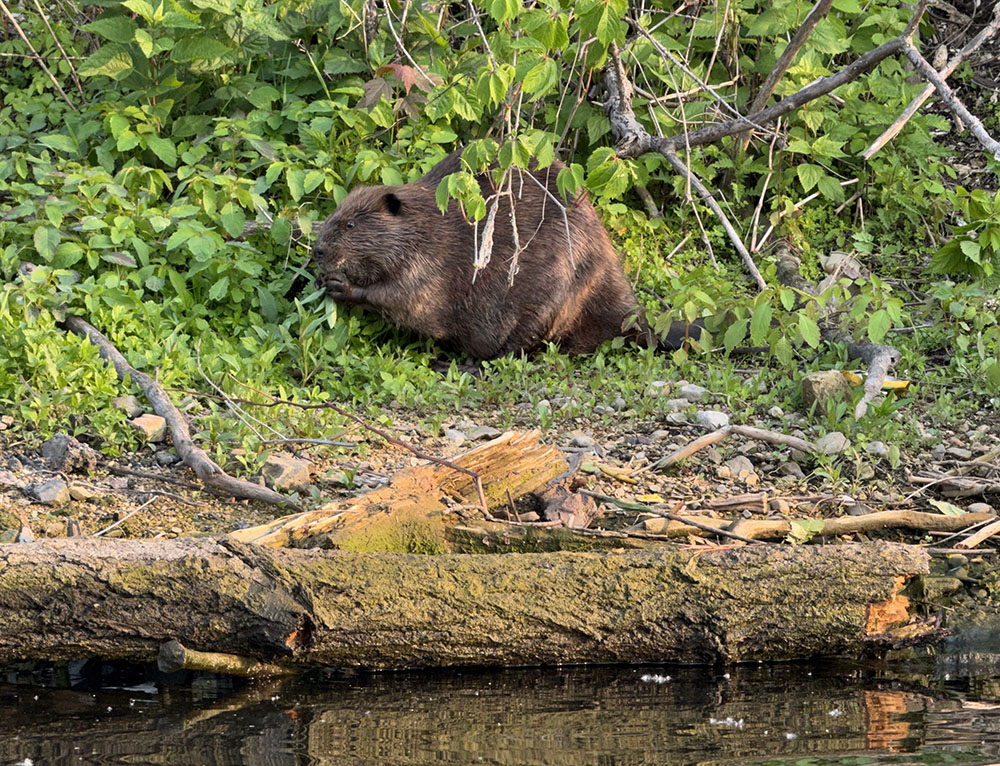
Eddee Daniel is a board member of Preserve Our Parks.
About Preserve Our Parks
Preserve Our Parks, Inc. is an independent nonprofit organization dedicated to the preservation of parks and green spaces. Our mission: To advocate for and promote Milwaukee area parks and open spaces and to strive to protect the tenets of Wisconsin’s Public Trust Doctrine.
For more than 25 years, we have been a leader in advocating for the protection of Milwaukee County park lands, halting many proposals to develop, privatize, or sell local parkland and lakefront spaces. More information about POP, including past accomplishments, is available at www.preserveourparks.org.
One thought on "Paddling SE Wisconsin: Adventure Awaits!"
Comments are closed.


Looks terrific!